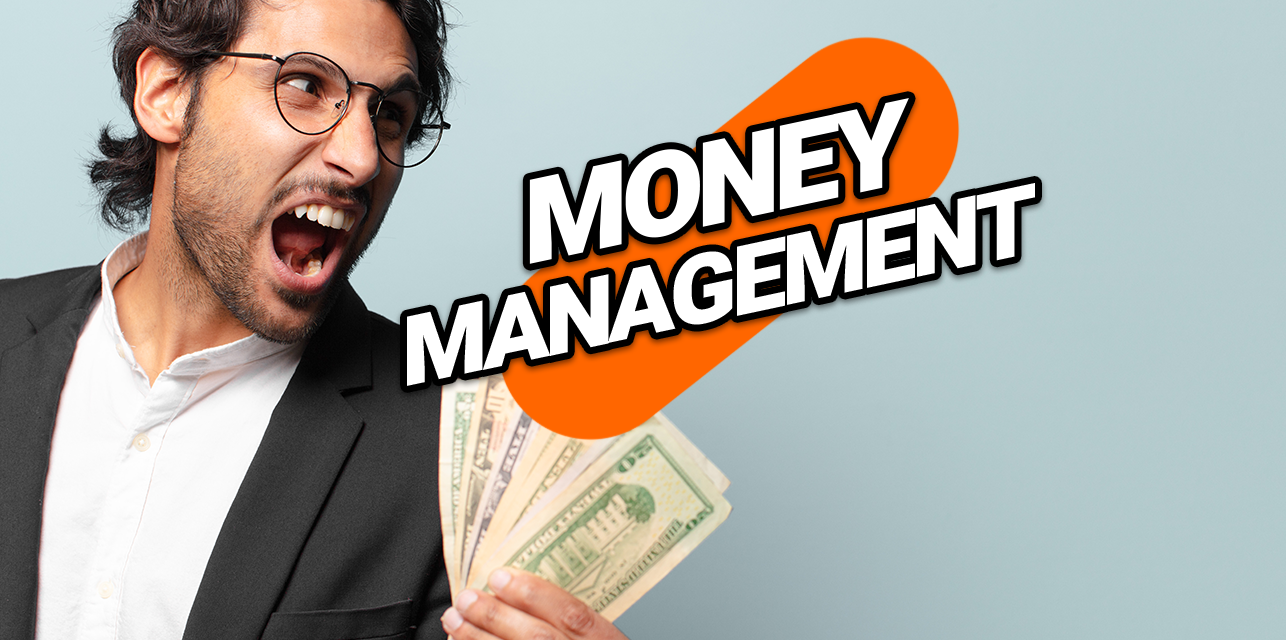Table of Contents
What is money management?
Quoted from Investopedia, money management refers to the process of financial planning such as saving, investing, spending, or supervising the use of capital for business or investment either individually or in groups.The term money management is also often used for investment management and portfolio management. Well, in forex trading, money management is the management of funds in your trading account.
This usually includes how many lots are in each trading position, how far between the entry price (open position) and the stop loss (SL) and the profit target, as well as the maximum number of trading positions you will open at the same time.
In a simple sense, MM or Money Management is fund management, estimating transactions and also managing and estimating loss limits.
Forex as you know can be profitable, but not always your position will be profitable continuously.
It could be that you will experience a loss once or twice before profit. It is also possible that you will experience consecutive losses without knowing when you can make a profit again.
Eventually, the profits you made over the months eventually evaporated overnight. This will also have an impact on the psychology of traders and the quality of trading.
This is where the role of money management trading is needed. Therefore, you can start looking for strategies to deal with loss risks by applying the right money management.
For example, you can look for a system that generates a 1:1 risk to reward ratio. The bigger the comparison, the better. Most traders prefer to use a 1:3 risk:reward.
What is an example of money management?
Essentially, money management is rooted in the question of how much money is 'risking' your risk. Risk in forex trading can be interpreted as the risk of loss taken during one trade.
Well, first determine the maximum amount of loss you can accept, for example you risk 2% one trade, if there is a loss three times in a row, then your trading account is minus 6%.
If the fourth trade is profitable, then risk vs reward of 1:3 will wipe out all your losses. Simply put, it's not profit that comes first, but the measurement of risk that you need to think about and prioritize. So, profits will follow by themselves.
By applying for example, risk vs reward 1:3, you can adjust the take profit level to be three times larger than the stop loss distance size for each order. Implementing risk and reward does seem to limit profit opportunities
However, you must remember that the key to successful forex trading is the discipline of implementing a pre-planned trading system or better known by traders as a trading plan.
There are many ways to double your profits, for example from $100 to $50,000 within a few months. However, when you suddenly experience a loss, your psychology is not ready to accept reality.
With a high 'win' percentage, your money will sink quickly or worse, your account will be hit by a margin call and you will have to start all over again.
Money management tips in forex trading
In forex trading, there are four important methods of risk management that you can use to manage money on your trading transactions. Here are the tips.1. Using stop loss or take profit
A stop loss is the lowest price limit value specified to limit losses. When the price movement touches this value, the system will automatically close the order or position.
Although stop losses are specifically designed to limit losses that may be incurred, the decision to place an SL becomes an inconvenient option for most traders.
Why? Because by placing a stop loss, it means that you risk closing the position at a loss, when the price is still correcting. As a result, it is not uncommon for traders to ignore stop losses while trading
In fact, if studied more deeply, the loss is more due to the trader's ignorance of how to use stop loss correctly. Meanwhile, another term that has a meaning almost similar to stop loss is take profit.
The difference is that take profit is used to limit the profit that will be obtained. If the profitable order is affected by this limit, the position will be closed automatically.
Why should profits be limited? Maybe for some people, getting high profits without setting limits will bring more profits.
However, the main purpose of take profit is so that profits can be secured. Of course, in determining this take profit, it should refer to the analysis that has been made, so that the TP level set can also be realistic.
2. Make a cut loss
This technique is carried out by closing loss-making transactions as soon as possible with the aim of avoiding the risk of greater losses. For example, at that time, you predict that the price will fall and are ready to sell as much as 1 lot at the level of 1.60000.
However, unexpectedly, the price moved up to the level of 1.60200, so you suffered a loss of minus 200 pips.
Because you don't want to face a greater risk of loss, at the level of 1.60200 sell you close the short position with the consequence of losing minus 200 pips.
3. Trying switching techniques
The switching technique is carried out by closing a losing position and immediately taking a new position that is in the same direction as the next price movement. The goal is to recover losses caused by previous trading positions.Usually, this technique is effective when there is a rapid and drastic change in price direction. Suppose you open a short position sell at the level of 1.60000.
But it turned out that the price moved up to the level of 1.60200. In this position, you have already incurred a loss of minus 200 pips.
If you assume that the price movement will still rise, then at the level of 1.60200 you close the sell short position. Then at the same time you open a long buy position at the level of 1.60200.
If it turns out that the price really continues to rise to the level of 1.60400, then your position at that time will be profitable by +200 pips. That means, the loss of -200 pips due to the previous short sell position has been covered.
Keep in mind that to perform this technique, you need to be in a position that is already very confident that the market will move quite fast.
Because by doing this technique, you open one new position again which of course is overshadowed by the risk of loss if it turns out that the market reverses direction again.
The maturity of the analysis and the level of mental readiness also affect the success of this switching technique.
4. Trying to take risks with averaging
Do you have a strong mentality and are not afraid of risk? Averaging can be one of the techniques you can use. Averaging (also known as 'cost-averaging') is a risk management technique that is quite extreme.
Why is it called extreme? Because basically this technique tries to 'go against' the direction of the price movement. The basic idea is that the market cannot move in one direction for good. At that time, you sell 1 lot at the level of 1.60000.
When the price moves up to the level of 1.60200, instead of closing the losing position, you add another short sell position of 1 lot. At this level, your loss is -200 pips. But it turned out that at that time the price rose again to the level of 1.60800.
So at this level your total loss is already -800 pips. Your losses will only be closed if the price drops back to the level of 1.60200. If at this level you close all short sell positions, then your losses will be zero.
If at that time the price drops back to the level of 1.60000, you will make a profit of +800 pips. Keep in mind, this technique is highly discouraged for traders who have minimal funds because they see that the risks are quite large.
Why do you need money management?
For an experienced trader, losses obviously won't bring them down. However, for beginner traders who do not understand money management at all, losses will make them lose capital and confidence.
For this reason, learning money management is very important for a trader. If you are still curious why money management is so important, here are some reasons that you can consider.
1. 'Safeguarding' your funds
Market conditions that continue to be volatile are one of the things that traders cannot control because basically, no investor or trader can move the market up or down.
In the face of all these uncertainties, money management is the controller of your funds. With money management, a trader will not trade carelessly.
Because the first component in money management is total capital, so you can know how much money can be used for investment or trading.
Traders with large capital will not be easily exposed to margin calls and are more efficient in determining stop losses.
For a beginner trader, it's a good idea to use a small capital first and gradually improve after understanding the world of trading.
This process will be able to be carried out more freely thanks to money management.
2. Know the risks on every trade
Why is money management so important for trading? One answer is to help you understand the maximum risk on each trading transaction.
If trading is done without qualified knowledge, then it is the same as gambling can just eliminate capital because there is no stop loss.
Through money management, you will know how much you lose when making a trading transaction, including 'saving' yourself when you hit your stop loss.
3. Calculating profits and losses
Well, the last reason why money management is so important in forex trading is that it can help traders in knowing the stop loss position and the target they want to achieve. This means that traders can understand how much the ratio or ratio of profits and losses is.
Indeed, what is this reward/risk ratio for? So that traders can choose the right trading position. If you're aiming for big profits, the reward ratio should be higher than the risk.
Why is that? So that even if you don't make a total profit while trading, the total profit is still greater than the loss. However, this ratio can change and adjust to trading conditions.
Trade securely with money management at GIC
Not familiar with GIC? Let's get acquainted. Unlike other conventional brokerage firms, GIC through the GICTrade platform provides a solution for traders who do not want to be charged with high trading fees. GICTrade is a peer-to-peer trading platform that brings together traders and market makers.
So, what is special about GICTrade? As a platform that brings together traders and market makers, you as a potential customer can certainly choose between the two, namely becoming a trader or a market maker.
GICTrade's role as a transaction venue provider can minimize costs and help maximize profits for traders and market makers as well as create a fair transaction atmosphere and results.
Traders will benefit from the absence of commission fees and low swap fees and spreads due to the presence of market makers as liquidity providers.
Anda juga bisa bergabung dengan komunitas trader di Telegram GICtrade untuk bertanya langsung kepada sesama trader seputar pengalaman trading.
You can also join the trader community on GICtrade's Telegram to ask fellow traders directly about their trading experience.
Also follow GIC's Instagram to get webinar information and various attractive prizes.
In addition, on YouTube GIC, traders can also learn to trade for free! What are you waiting for? Get more features that fully support you to start investing and trading forex through GIC. Make transactions simpler, safer, and more profitable.
 Last:
Last: 







